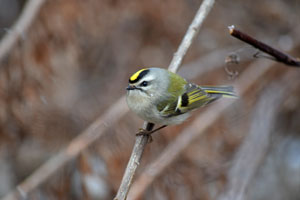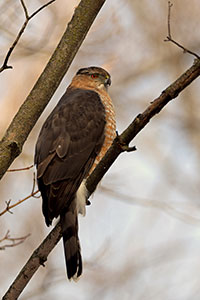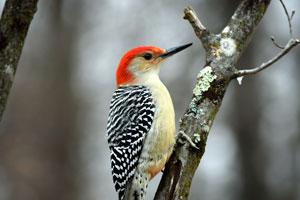- YouTube
- TikTok
OU campus a local hotspot for birds and birdwatchers
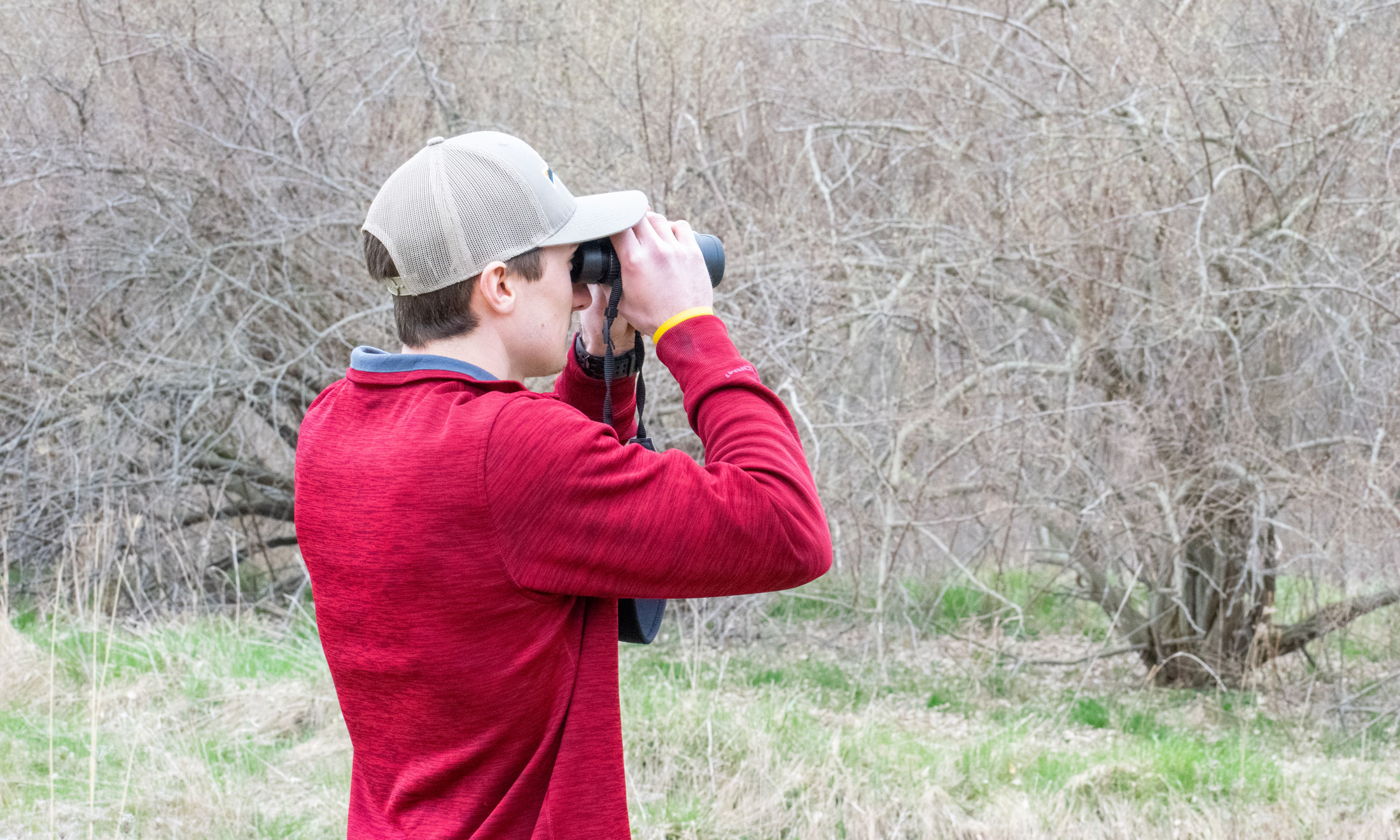
OU student Chandler Mancuso looks for birds at OU's biological preserve (Photo: Tom Cremonte)
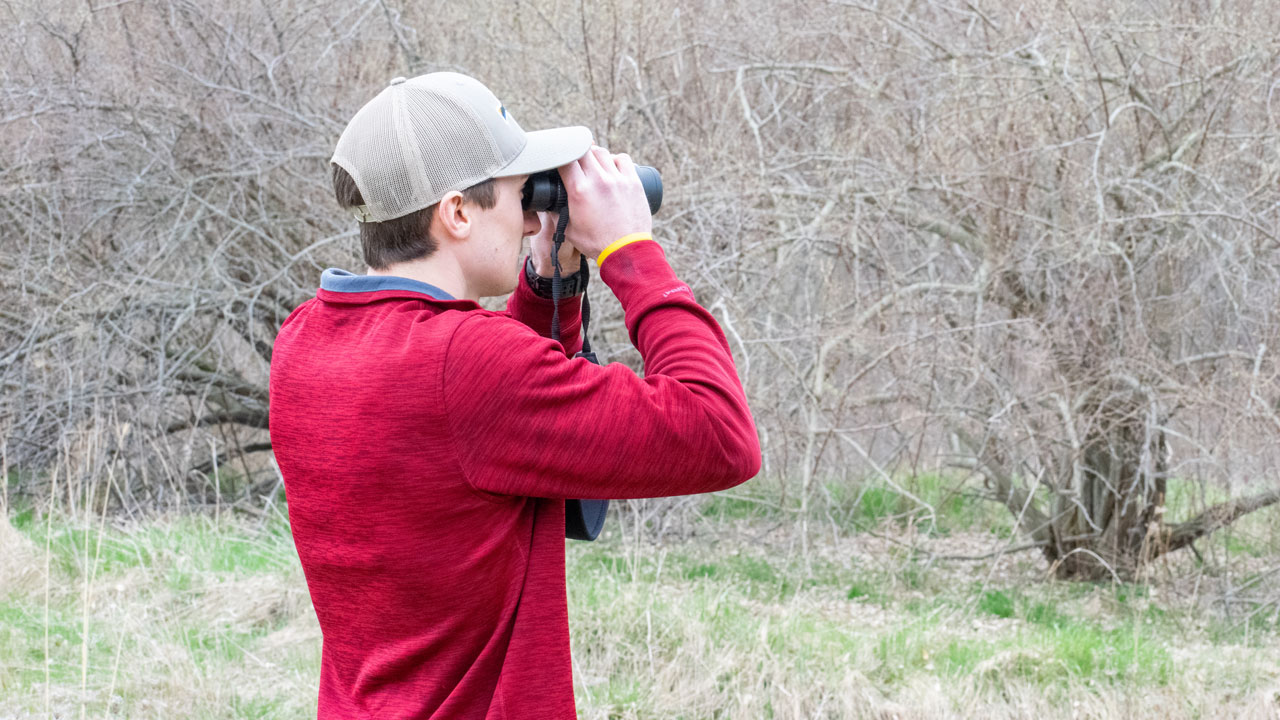
Without the usual bustle of students, faculty and staff, Oakland University’s campus may seem unusually quiet these days. But for birding enthusiasts like Chandler Mancuso, the campus’s 1,400-plus acres are alive with the sights and sounds of nature.
Golden-crowned Kinglet at OU's bio preserve (Photo: Allison Kulka) |
“The highest intensities for bird migration are typically in the spring and fall – from late April until early June and then again in September,” said Mancuso, a master’s student in the Department of Chemistry. “I’ve noticed that at Oakland, the spring migration tends to be particularly eventful.”
Mancuso counts OU among his favorite places to look for birds. He’s logged over 100 species on campus, including recent sightings of the American Goldfinch, Eastern Bluebird and Red-tailed Hawk, to name a few. He records his observations on ebird.org, a crowdsourced database of bird sightings worldwide. Run by the Cornell Lab of Ornithology, the site provides population distributions for all species in the database, which aids scientific research and conservation efforts.
Cooper's Hawk at OU's bio preserve (Photo: Allison Kulka) |
“Platforms like ebird are really great because there’s so many people involved, and you have the opportunity to expand your data collection all across the world,” he explained. “It helps you monitor how bird populations are changing year after year, and how they're responding to environmental factors like climate change.”
To date, the website lists a total of 142 bird species seen at OU, a testament to the campus’s value as a wildlife haven. Mancuso has tallied many bird sightings at the university’s biological preserve, a sprawling expanse of forests, meadows, streams and wetlands.
“It’s one of the few places in a pretty large radius where the birds can come down and feed and rest throughout their migration pattern,” he said. “I think it’s definitely a place that's worth conserving, and even enhancing. It’s a really important spot for the birds.”
While he’s noticed an uptick in sightings amid the coronavirus outbreak, Mancuso says it doesn’t compare to his most memorable birding experience. As an OU undergraduate, he traveled to Costa Rica for a tropical field ecology class led by biology professor Scott Tiegs. It cemented his passion for birds – and birdwatching.
Red-bellied Woodpecker at OU's bio preserve (Photo: Allison Kulka) |
“When you go to Costa Rica in February, and you see the culmination of all the birds that are wintering down there, as well as the birds that spend their entire lives there, it's just an insane amount of birds and an insane level of diversity,’ he said. “It was really incredible being able to see so many different species all in one place.”
A member of OU’s Ecology Club, Mancuso often goes birding with groups of students and professors on campus. He can identify many birds by sight and sound, and also consults birding apps and field guides. While he’s birded at various locales, both nationally and internationally, he plans to keep an eye on OU.
“OU is definitely a place I’ll continue to go,” he said. “It’s a really high-quality natural habitat. I think there are still more species to be found there.”


 May 20, 2020
May 20, 2020